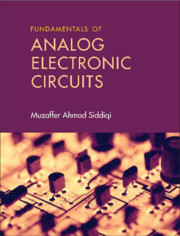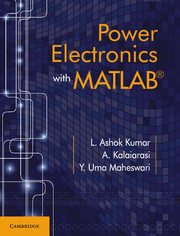Refine search
Actions for selected content:
1784 results in Circuits and systems

Analysis and Design of Data Converters
-
- Published online:
- 13 November 2025
- Print publication:
- 03 July 2025
-
- Textbook
- Export citation

Basic Electronics for Scientists and Engineers
- Coming soon
-
- Expected online publication date:
- November 2025
- Print publication:
- 20 November 2025
-
- Textbook
- Export citation

Fundamentals of Analog Electronic Circuits
-
- Published online:
- 08 October 2025
- Print publication:
- 31 December 2025
-
- Textbook
- Export citation

Power Electronics with MATLAB
-
- Published online:
- 19 August 2025
- Print publication:
- 04 October 2017
-
- Textbook
- Export citation

Fundamentals of Electrical Engineering
-
- Published online:
- 16 July 2025
- Print publication:
- 10 November 2016
-
- Textbook
- Export citation
7 - Design Study of a Comparator
-
- Book:
- Analysis and Design of Data Converters
- Published online:
- 13 November 2025
- Print publication:
- 03 July 2025, pp 129-141
-
- Chapter
- Export citation
13 - Flash ADCs
-
- Book:
- Analysis and Design of Data Converters
- Published online:
- 13 November 2025
- Print publication:
- 03 July 2025, pp 251-283
-
- Chapter
- Export citation
22 - Basic Design of ΔΣ Modulators
-
- Book:
- Analysis and Design of Data Converters
- Published online:
- 13 November 2025
- Print publication:
- 03 July 2025, pp 509-533
-
- Chapter
- Export citation
10 - Current-Steering DACs
-
- Book:
- Analysis and Design of Data Converters
- Published online:
- 13 November 2025
- Print publication:
- 03 July 2025, pp 174-209
-
- Chapter
- Export citation
8 - General DAC Concepts
-
- Book:
- Analysis and Design of Data Converters
- Published online:
- 13 November 2025
- Print publication:
- 03 July 2025, pp 142-157
-
- Chapter
- Export citation
17 - Fundamentals of Pipelined ADCs
-
- Book:
- Analysis and Design of Data Converters
- Published online:
- 13 November 2025
- Print publication:
- 03 July 2025, pp 353-382
-
- Chapter
- Export citation
21 - Introduction to Oversampling ADCs
-
- Book:
- Analysis and Design of Data Converters
- Published online:
- 13 November 2025
- Print publication:
- 03 July 2025, pp 479-508
-
- Chapter
- Export citation
12 - Introduction to Nyquist-Rate ADCs
-
- Book:
- Analysis and Design of Data Converters
- Published online:
- 13 November 2025
- Print publication:
- 03 July 2025, pp 236-250
-
- Chapter
- Export citation
24 - Advanced Oversampling ADCs
-
- Book:
- Analysis and Design of Data Converters
- Published online:
- 13 November 2025
- Print publication:
- 03 July 2025, pp 559-581
-
- Chapter
- Export citation
4 - Design Study of a Sampling Circuit
-
- Book:
- Analysis and Design of Data Converters
- Published online:
- 13 November 2025
- Print publication:
- 03 July 2025, pp 60-69
-
- Chapter
- Export citation
Contents
-
- Book:
- Analysis and Design of Data Converters
- Published online:
- 13 November 2025
- Print publication:
- 03 July 2025, pp vii-xiv
-
- Chapter
- Export citation
20 - Interleaved ADCs
-
- Book:
- Analysis and Design of Data Converters
- Published online:
- 13 November 2025
- Print publication:
- 03 July 2025, pp 439-478
-
- Chapter
- Export citation
About the Author
-
- Book:
- Analysis and Design of Data Converters
- Published online:
- 13 November 2025
- Print publication:
- 03 July 2025, pp xviii-xviii
-
- Chapter
- Export citation
18 - Nonidealities in Pipelined ADCs
-
- Book:
- Analysis and Design of Data Converters
- Published online:
- 13 November 2025
- Print publication:
- 03 July 2025, pp 383-417
-
- Chapter
- Export citation
15 - SAR ADC Nonidealities
-
- Book:
- Analysis and Design of Data Converters
- Published online:
- 13 November 2025
- Print publication:
- 03 July 2025, pp 310-329
-
- Chapter
- Export citation
